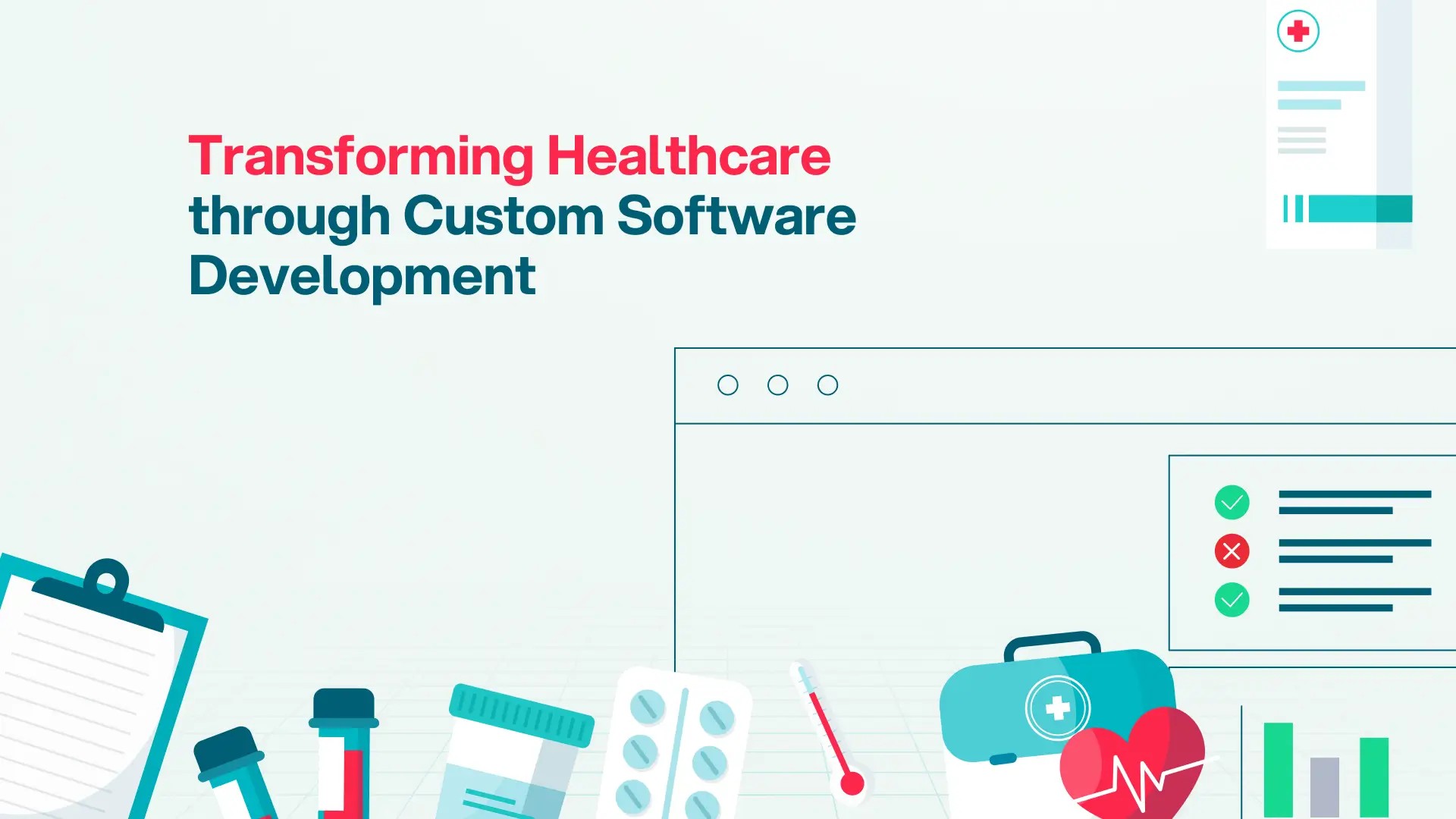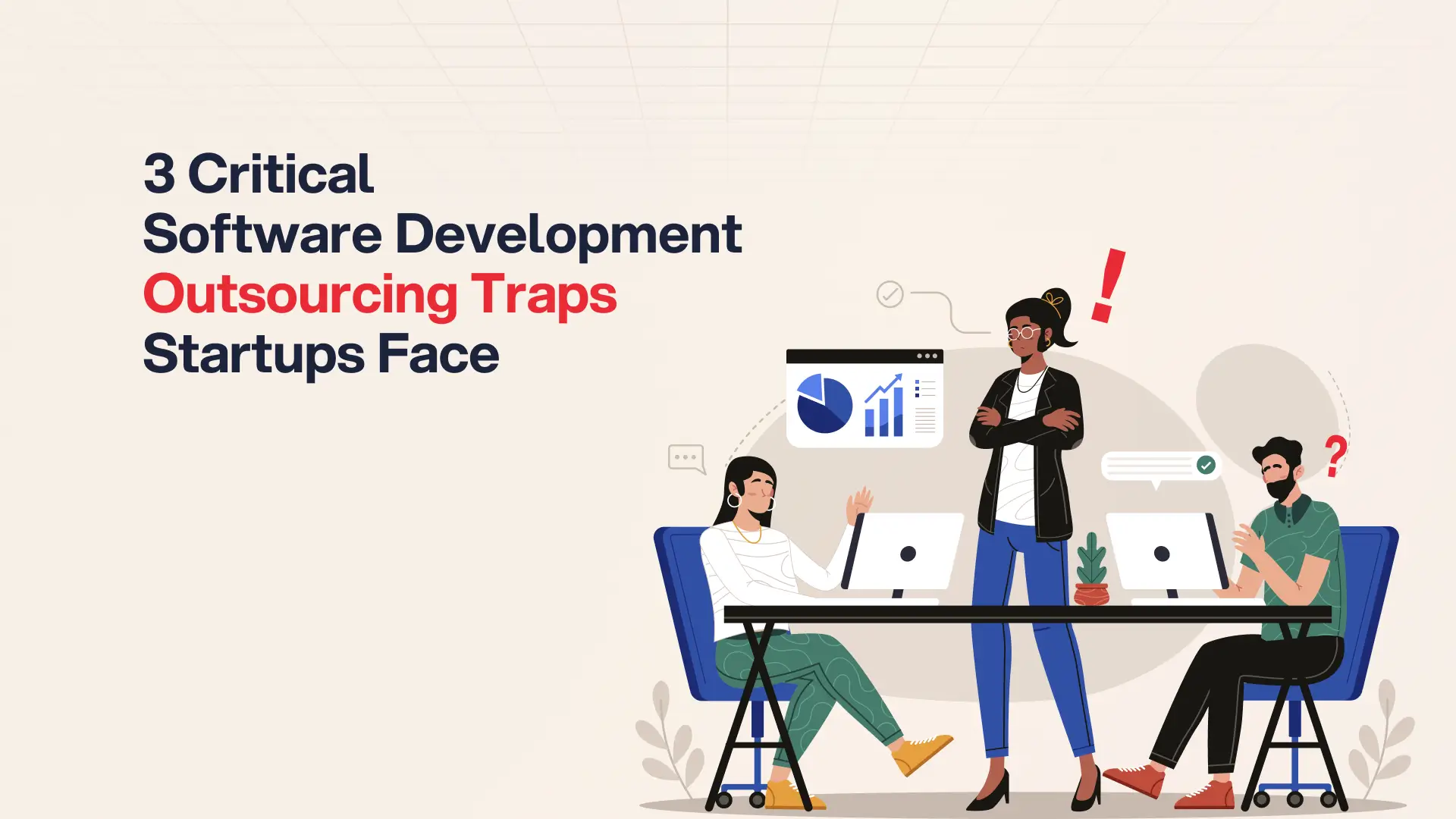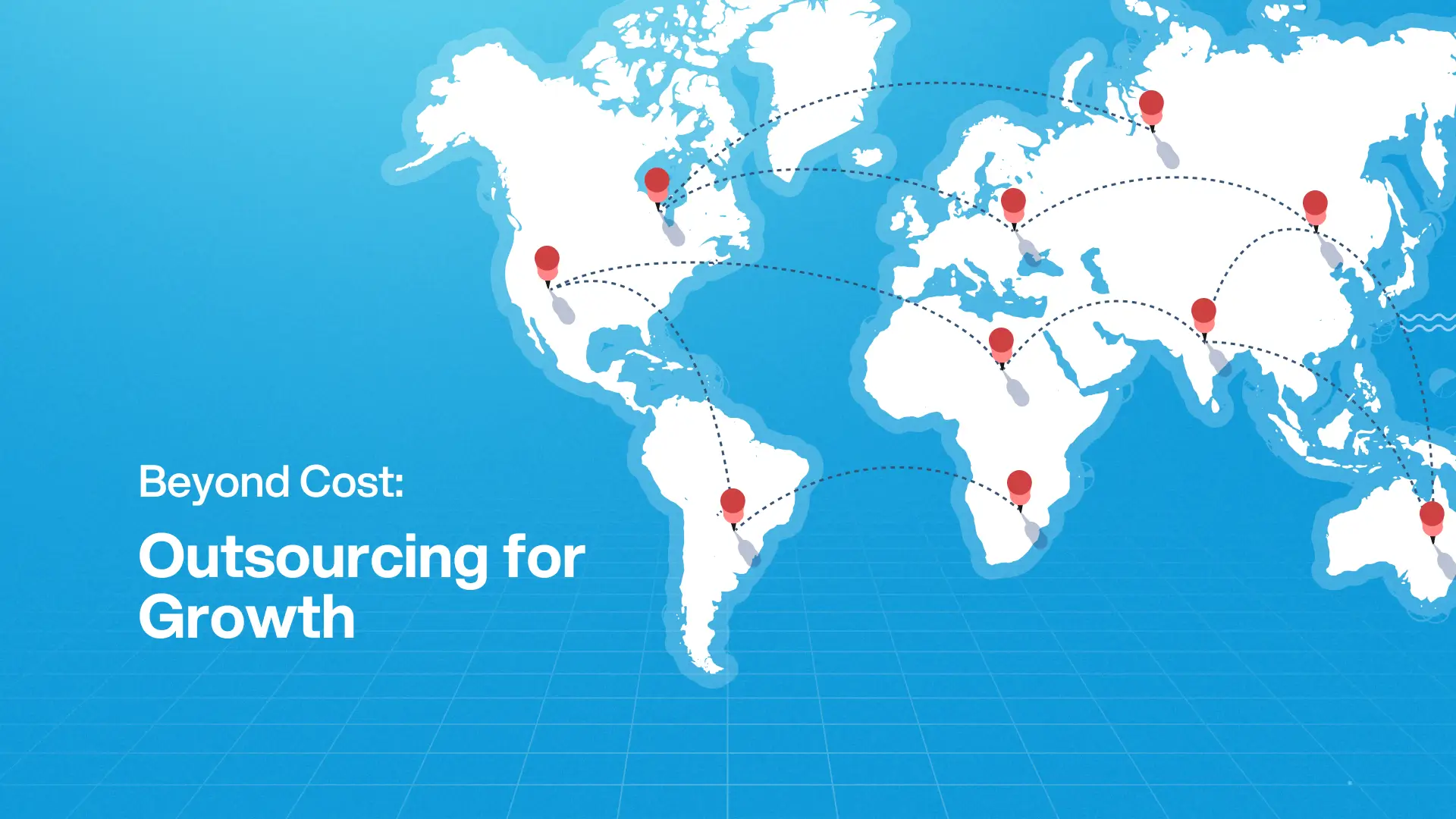Post Activity
 1293
1293
Table of Content
Share This Post
Table of Content
The healthcare industry is under unprecedented strain. Global health spending is projected to exceed $10 trillion by 2030, while the WHO forecasts a shortage of 10 million healthcare workers by the same year. Layer in aging populations, chronic disease burdens, and the aftershocks of COVID-19, and it’s clear: traditional models of care delivery are no longer sustainable. This is where AI steps into healthcare. AI could save the U.S. healthcare system up to $360 billion annually by improving diagnostics, streamlining operations, and enhancing patient engagement. The market is responding fast: AI in healthcare is expected to grow from $11 billion in 2021 to $187 billion by 2030. This signals that AI in healthcare is not hype, but adoption at scale.
Key Challenges in Healthcare
- Rising healthcare costs
- Shortage of medical professionals
- Burden from pandemics (e.g., COVID-19)
- Inefficiencies in diagnosis and treatment
- Cognitive and experiential biases among clinicians
- AI is positioned as a transformative solution to address these systemic issues.
Potential of AI in Healthcare
Artificial Intelligence (AI) is rapidly transforming the healthcare landscape, offering scalable solutions to persistent challenges such as workforce shortages, rising operational costs, and clinical inefficiencies. AI has the potential to transform every layer of healthcare delivery:
- Drug Discovery: AI can speed up drug development and repurposing by automating target identification and compound screening. Major players like Pfizer and Sanofi are using AI platforms (e.g., IBM Watson, Exscientia) to optimize R&D pipelines. This shortens time-to-market, reduces R&D costs, and boosts competitiveness in pharmaceuticals and biotechnology.
- Clinical diagnostics: AI models can interpret radiology images, pathology slides, and genomic data with specialist-level precision.
- Operational efficiency: Generative AI is automating clinical documentation, reducing physician burnout and administrative overhead.
- Patient engagement: Intelligent chatbots and AI triage systems are streamlining scheduling, follow-ups, and telemedicine.
- Predictive care: Machine learning models are identifying high-risk patients for early intervention, improving outcomes while lowering readmission rates.
- Revenue cycle optimization: AI-powered tools can accelerate claims processing, detect anomalies, and reduce denials.
Real-world success stories from institutions like Mayo Clinic, Mount Sinai, and Kaiser Permanente show that AI delivers measurable gains, from reduced ICU stays to millions saved in billing accuracy and operational efficiency.
Thinking of Outsourcing?
Access a wide range of outsourcing companies and find your best fit.
Case Study: Mayo Clinic – Radiology AI for Faster Diagnoses
Use Case:
Mayo Clinic partnered with Google Health to deploy deep learning models that analyze chest X-rays and CT scans for early detection of lung cancer, tuberculosis, and COVID-19-related pneumonia.
Outcomes:
- Reduced radiologist read times by up to 40%.
- Identified early-stage cancers missed in routine reviews.
- Improved diagnostic accuracy in rural clinics without full-time radiologists.
Cost Impact:
- Estimated savings of $3.5M annually from reduced unnecessary follow-up imaging and earlier interventions.
- Enabled resource optimization across locations through centralized AI-assisted reading.
Strategic Note:
Mayo built this into a cloud-native platform integrated directly into their PACS system, emphasizing scalability and compliance.
Case Study: Mount Sinai Health System – AI for Sepsis Prediction
Use Case:
Mount Sinai implemented an AI-driven early warning system (developed with their in-house data science team) to detect sepsis risk using real-time EHR data.
Outcomes:
- Identified at-risk patients 6–12 hours earlier than clinicians.
- Led to a 30% reduction in sepsis mortality over 18 months.
- Reduced average ICU length of stay by 24%.
Cost Impact:
- Annual savings of over $10M through reduced ICU utilization and shorter hospitalizations.
- Reduced downstream complications, translating to better patient outcomes and lower payer costs.
Strategic Note:
They used a cross-functional AI governance board to ensure algorithm transparency and clinician trust.
Case Study: Kaiser Permanente – AI in Revenue Cycle & Patient Engagement
Use Case:
Kaiser implemented AI to automate medical coding, claims prediction, and patient chatbot services for follow-ups and appointment scheduling.
Outcomes:
- 98% accuracy in automated coding using natural language processing.
- Patient chatbots handled up to 60% of inbound inquiries without human escalation.
- Improved appointment shows rates by 20% with AI-powered reminders and rescheduling.
Cost Impact:
- Recovered over $50M annually through improved claims processing and fewer denials.
- Reduced call center staffing costs by 15–20%, redirected to higher-value tasks.
Strategic Note:
AI tools were integrated into Epic and back-office systems through custom APIs and FHIR connectors.
Ready to Build Your Team?
Let’s create together, innovate together, and achieve excellence together. Your vision, our team – the perfect match awaits.
Diagnostic Accuracy of Deep Learning in Medical Imaging
Deep learning holds transformative promise in medical diagnostics, particularly in imaging. However, its true clinical impact hinges not just on algorithmic capability, but on standardized reporting, robust validation, and regulatory clarity. A comprehensive study evaluated the diagnostic accuracy of deep learning (DL) algorithms across medical imaging specialties—ophthalmology, respiratory medicine, and breast imaging. The study synthesized data from 503 studies (273 included in meta-analysis) to assess DL performance.
Key Findings
1. High Diagnostic Accuracy Across Specialties
- Ophthalmology: DL achieved outstanding performance for diabetic retinopathy (AUC up to 1.00 using OCT), glaucoma (AUC ~0.96), and AMD (AUC ~0.97).
- Respiratory Imaging: DL showed strong accuracy for detecting:
- Lung nodules via CT (AUC 0.937)
- Pneumothorax (AUC 0.91)
- Tuberculosis (AUC 0.979, Sensitivity 0.998, Specificity 1.000)
- Breast Imaging: DL performed well across modalities:
- Ultrasound (AUC 0.909)
- Digital Breast Tomosynthesis (AUC 0.908)
- Mammography (AUC 0.873)
- MRI (AUC 0.868)
2. Significant Methodological and Reporting Variation
- Only 8 ophthalmology, 10 respiratory, and 6 breast studies followed STARD-2015 diagnostic reporting guidelines.
- High heterogeneity was observed in validation methods, reference standards, and dataset use (e.g., internal vs. external).
- Most studies relied on retrospective datasets; very few conducted prospective or randomized trials.
3. Bias and Applicability Concerns
- Over 70% of studies had high or unclear risk of bias in patient selection.
- Over 80% had concerns in flow, timing, or reference standard applicability.
Economic Considerations for Using AI in Healthcare
The AI healthcare market was valued at $11 billion in 2021 and is projected to hit $187 billion by 2030. This growth signals a massive transformation in how healthcare providers operate. AI’s greatest cost impact is observed in:
- Faster diagnostics reducing hospital stays
- More accurate risk stratification improving outcomes
- Streamlined administrative workflows that save clinician time and operational cost
AI could generate up to $360 billion in annual savings for the U.S. healthcare system. Hospitals alone could save hundreds of thousands per day through reduced diagnostic delays and treatment inefficiencies.
However, total cost of ownership includes:
- AI solution complexity and development cost ($35K to $200K+)
- Integration with legacy systems and EHRs
- Compliance with HIPAA, FDA, and GDPR
- Cloud infrastructure and ongoing operational expenses
C-suite leaders must weigh these costs against long-term savings and efficiency gains, using structured economic modeling and scenario analysis.
Start Your AI Journey with Expert Outsourcing
From predictive analytics to intelligent automation, we build AI/ML solutions that transform your data into decisions
Outsourcing AI Development: A Strategic Enabler for Healthcare Companies
To overcome in-house talent shortages and accelerate time to value, healthcare companies are increasingly outsourcing AI developments.
Offshoring to Asia
Countries like India, Vietnam, and the Philippines offer:
- Access to large pools of data scientists and ML engineers
- Cost savings of 30–50%
- Proven success in healthcare AI (e.g., imaging diagnostics, claims automation)
Nearshoring to Latin America
For U.S.-based providers, Colombia, Mexico, and Argentina offer:
- Time zone alignment and easier collaboration
- Strong English proficiency and healthcare tech talent
- Growing ecosystems in cloud AI and compliance-aware development
By working with the right outsourcing partners, healthcare organizations can:
- Access specialized AI expertise
- Accelerate prototyping and deployment
- Reduce project risk and cost
To make outsourcing successful:
- Choose vendors with healthcare domain experience and regulatory awareness
- Prioritize data privacy and security frameworks**, especially when handling PHI
- Blend internal and outsourced teams** for long-term knowledge transfer and ownership
- Use agile delivery models** for rapid prototyping and iterative validation
- Embed governance and explainability protocols** to build clinician trust and meet compliance
Final Thoughts
AI is no longer optional in healthcare. It is essential for competitive, high-quality patient care. But building and scaling AI solutions requires more than ambition. It demands the right talent, governance, and delivery models.
Outsourcing AI development is now a strategic move to accelerate innovation, mitigate risk, and bring transformative solutions to the healthcare sector. Whether through offshore development centers in Asia or nearshore partnerships in Latin America, a specialized workforce that understands both care and code will build the future of AI in healthcare.
Find Your Perfect Software Outsourcing Partner
Unlock a world of trusted software outsourcing companies and elevate your business operations seamlessly.






